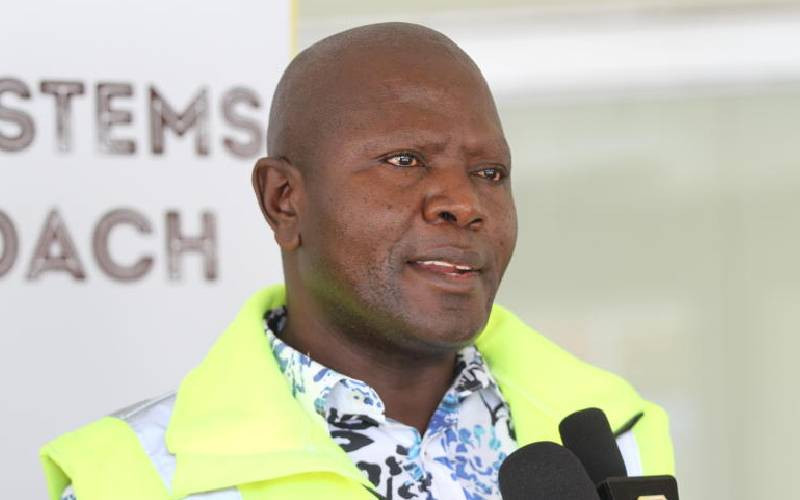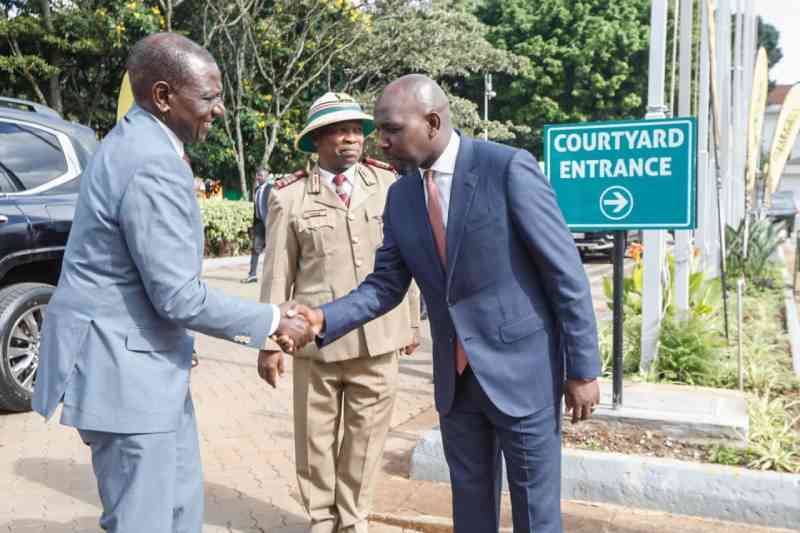?The Bus Rapid Transport (BRT) has joined a growing list of grand projects in the transport sector that have failed or were never implemented.
On the spot are the National Transport and Safety Authority and the Nairobi Metropolitan Transport Authority as well as State House, which has more than once been drawn into launching some of these failed initiatives. The BRT project was announced in a hurried painting of lanes on Thika Road, which closely followed the appearance of National Youth Service (NYS) buses on the roads. On the day of its launch, Transport CS James Macharia appeared in Parliament to announce that the state had bought 50 high-capacity buses for these special lanes.
“We need more than 900 buses in these six corridors and because we don’t have them, we have opened one corridor, the Thika Highway, so that from today, we are starting the demarcation and dedication of that lane,” he told MPs before rushing to Thika Road to inspect painting of the new bus lanes.
No approval
On Thursday, Parliament questioned the viability of the proposed programme as it emerged NYS was rolling out the project without the approval of the Budget and Appropriations Committee. The Treasury had released Sh500 million to NYS for the project without parliamentary approval. As questions linger on the BRT, it has emerged that NYS has silently taken its 29 buses off the roads without an explanation. Youth CS Margaret Kobia declined to respond to our queries.
Meanwhile, new drivers have been unable to get licences for close to a month as talk on the roll out of digital licences continues for its second year. “They (NTSA) told us there are some technicalities but they are working on them,” Matatu Welfare Association (MWA) Chairman Dickson Mbugua said.
The new licences were to have distinctive features such as bio-metric details, a demerit point system and a payments wallet. The wallet would enable drivers make on-the-spot payments for traffic offences and cater for other costs.
A Sh2.1 billion deal between NTSA and the National Bank of Kenya was inked in January last year to enable the roll out of the digital licences. Since then, it has been promise after another on when they will be launched.
Last December, NTSA Director General Francis Meja said the licences would be launched in January, only for him to extend the date to May. Yesterday, Mr Meja could not give a tentative date, only telling Sunday Standard they will be launched soon. “There was a small hiccup but we are soon launching them. Anybody who will be applying for a renewal licence soon will get a new generational one,” he said. Yet this is not the only digital project the state is finding hard to implement. It has never rolled out the cashless fare payment system which failed on arrival and the smart number plates idea which never took off.
At the time of launching the cashless system in 2015, the government argued that cash payments are much less secure than direct debit, and the taxes generated from the system will be ploughed back into the public transport sector. Barely a month after it launched the cashless system, the government was at it again, this time with smart number plates. German firm EHA Hoffman was awarded the contract to supply blank plates for three years at Sh709.2m.
The smart registration plates, the State argued, were a critical component of a wider security plan dubbed the Integrated Automated Management System in which the new generation driving licences were to be introduced. The move was aimed at deterring fraudsters who use their vehicles as collateral to acquire loans.
Bidders who lost out to the German firm on the contract went to court, but the case was thrown out in August last year. That was the last time the project was heard of until Macharia appeared in Parliament suddenly to declare the launch of the BRT system. But none of these ghost undertakings compare to the Nairobi Commuter Rail Project, launched in November 2012. The project was supposed to revitalise railway transport in the capital, with the government setting aside Sh1.45 billion for it. The project was to take 24 months.
“What the government does best is public relations, but they never deliver,” Peter Murima, the Motorists Association of Kenya chairman, said.
[email protected]
Stay informed. Subscribe to our newsletter
 The Standard Group Plc is a
multi-media organization with investments in media platforms spanning newspaper
print operations, television, radio broadcasting, digital and online services. The
Standard Group is recognized as a leading multi-media house in Kenya with a key
influence in matters of national and international interest.
The Standard Group Plc is a
multi-media organization with investments in media platforms spanning newspaper
print operations, television, radio broadcasting, digital and online services. The
Standard Group is recognized as a leading multi-media house in Kenya with a key
influence in matters of national and international interest.
 The Standard Group Plc is a
multi-media organization with investments in media platforms spanning newspaper
print operations, television, radio broadcasting, digital and online services. The
Standard Group is recognized as a leading multi-media house in Kenya with a key
influence in matters of national and international interest.
The Standard Group Plc is a
multi-media organization with investments in media platforms spanning newspaper
print operations, television, radio broadcasting, digital and online services. The
Standard Group is recognized as a leading multi-media house in Kenya with a key
influence in matters of national and international interest.









